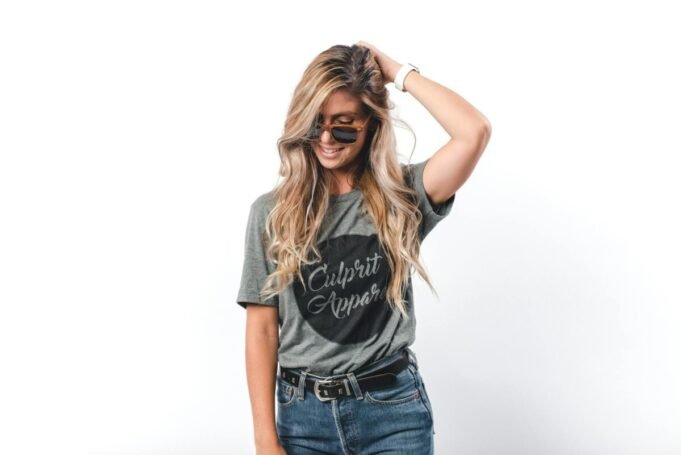The fashion industry has a significant impact on the environment, contributing to 10% of global carbon emissions and 20% of wastewater. It's also notorious for poor labor practices and worker exploitation. As awareness of these issues grows, more consumers are turning to sustainable fashion as a way to align their values with their fashion choices. Sustainable fashion, also referred to as eco-fashion or ethical fashion, is an approach to fashion production and consumption that prioritizes environmental sustainability, social responsibility, and ethical practices throughout the supply chain.
II. The Problem with Fast Fashion
Fast fashion has become ubiquitous in recent decades, with large retailers churning out cheap, trendy clothing at breakneck speeds. This business model is built on a foundation of environmental destruction and human rights abuses. Some of the key issues with fast fashion include:
-
Water pollution: Textile dyeing and treatment is responsible for 20% of global industrial water pollution. Many of the chemicals used are toxic and can harm aquatic ecosystems and human health.
-
Textile waste: The fast fashion model encourages disposable clothing, leading to a staggering amount of textile waste. Approximately 85% of all textiles end up in landfills each year, where they can take hundreds of years to decompose.
-
Carbon emissions: The fashion industry is responsible for 10% of global carbon emissions, more than all international flights and maritime shipping combined. Fast fashion's reliance on fossil fuels and energy-intensive production methods exacerbates this problem.
-
Labor exploitation: Many fast fashion brands outsource production to developing countries where labor is cheap and regulations are lax. This often leads to poor working conditions, low wages, and even child labor.
III. What Makes Fashion Sustainable?
Sustainable fashion is built on several key principles that address the environmental and social impacts of clothing production:
-
Environmentally friendly materials: Sustainable brands prioritize materials that have a lower environmental impact, such as:
- Organic cotton, which is grown without harmful pesticides and requires less water than conventional cotton
- Hemp, a fast-growing crop that requires minimal water and pesticides
- Recycled polyester, which is made from post-consumer plastic waste
- Tencel, a biodegradable fiber made from wood pulp
-
Ethical labor practices: Sustainable fashion brands ensure fair wages, safe working conditions, and worker empowerment throughout their supply chains. They often partner with fair trade organizations and follow strict codes of conduct.
-
Longevity and quality: Fast fashion encourages a disposable mindset, but sustainable fashion emphasizes the opposite. Sustainable brands create high-quality, timeless pieces that are built to last, reducing the need for constant consumption.
-
Circular fashion models: The traditional linear model of fashion (make, use, dispose) is inherently unsustainable. Sustainable brands are embracing circular models that keep garments in use for as long as possible, such as:
- Take-back programs for recycling or reselling garments
- Rental and subscription models that allow customers to borrow clothing
- Upcycling and repairing services to extend the life of garments
IV. Benefits of Sustainable Fashion
Choosing sustainable fashion has numerous benefits for both people and the planet:
-
Reduces environmental impact: By using eco-friendly materials, reducing waste, and minimizing carbon emissions, sustainable fashion helps to mitigate the industry's environmental footprint.
-
Promotes fair labor practices: Sustainable brands prioritize the well-being of workers, ensuring fair wages, safe conditions, and opportunities for advancement. This helps to lift communities out of poverty and promote social justice.
-
Encourages mindful consumption: Sustainable fashion encourages consumers to buy less, choose well, and make each purchase count. This mindset shift can lead to a more fulfilling relationship with clothing and a reduction in overall consumption.
-
Provides access to high-quality pieces: Sustainable fashion brands often prioritize quality over quantity, creating pieces that are designed to last. While the upfront cost may be higher, the cost per wear is often lower than fast fashion alternatives.
V. How to Shop Sustainably
Shopping sustainably involves a combination of research, mindfulness, and strategic choices:
-
Look for certifications: Certifications are a good way to identify brands that meet certain environmental and social standards. Some common certifications include:
- Global Organic Textile Standard (GOTS): Ensures that textiles contain at least 70% organic fibers and meet strict environmental and social criteria
- Fairtrade: Ensures that producers in developing countries receive fair prices, decent working conditions, and opportunities for advancement
- Bluesign: Ensures that textiles are produced with minimal impact on people and the environment
-
Buy secondhand or rent: One of the most sustainable ways to shop is to buy secondhand or rent clothing. This reduces demand for new production and keeps garments in use for longer. Online marketplaces like ThredUp, Poshmark, and Depop make it easy to find secondhand clothing, while rental services like Rent the Runway and Nuuly offer access to designer pieces without the commitment of ownership.
-
Support local and small businesses: Small, local businesses often have more transparent supply chains and are more likely to prioritize sustainability. Supporting these businesses helps to build a more sustainable fashion ecosystem and strengthens local economies.
-
Invest in versatile, timeless pieces: Rather than chasing trends, focus on building a wardrobe of high-quality, versatile pieces that can be worn in multiple ways. This reduces the need for constant shopping and ensures that each piece gets plenty of wear.
-
Take care of your clothes: Proper care can extend the life of your garments, reducing the need for replacements. Follow care instructions, mend damaged pieces, and consider eco-friendly cleaning methods like handwashing or using a guppyfriend bag to reduce microfiber shedding in the wash.
VI. Sustainable Fashion Myths Debunked
Despite the growing popularity of sustainable fashion, there are still many misconceptions about what it entails:
| Myth | Reality |
|---|---|
| Sustainable fashion is boring and unstylish | Many sustainable brands offer a wide range of styles, from classic basics to cutting-edge designs. Sustainable fashion is just as diverse and expressive as conventional fashion. |
| Sustainable fashion is too expensive | While some sustainable pieces may have a higher upfront cost, they are often designed to last longer, providing better value in the long run. Additionally, the growing availability of sustainable options at various price points makes it accessible to a wider range of consumers. |
| Sustainable fashion is hard to find | With the growth of online marketplaces, sustainable fashion is more accessible than ever. Many brands also have their own e-commerce sites, and there are numerous online resources for discovering sustainable brands. |
| Sustainable fashion means compromising on quality | Sustainable brands often prioritize quality as a key component of sustainability. By using high-quality materials and construction techniques, they create pieces that are built to last, reducing the need for frequent replacements. |
VII. The Future of Sustainable Fashion
The sustainable fashion movement is gaining momentum, driven by a combination of consumer demand, technological innovation, and industry leadership:
-
Growing consumer awareness: As consumers become more aware of the impacts of their fashion choices, they are increasingly seeking out sustainable options. A 2020 McKinsey report found that 67% of consumers consider the use of sustainable materials to be an important purchasing factor.
-
Material innovations: Brands and researchers are developing new, sustainable materials to replace resource-intensive conventional options. Some examples include:
- Piñatex, a leather alternative made from pineapple leaf fibers
- Mylo, a mycelium-based leather alternative developed by Bolt Threads
- Econyl, a regenerated nylon made from ocean plastic waste
-
Industry collaborations: The fashion industry is coming together to address sustainability challenges through collaborative initiatives. The UN Alliance for Sustainable Fashion brings together various UN agencies to coordinate efforts on sustainable fashion, while the Fashion Pact unites leading fashion companies in a commitment to environmental goals.
-
Policy changes: Governments are starting to take action on sustainable fashion through legislation and incentives. For example, the EU's Circular Economy Action Plan includes a Sustainable Product Policy Framework that will set performance and information requirements for textiles.
Sustainable fashion is a complex and multifaceted issue, but at its core, it's about creating a fashion system that is kinder to people and the planet. By prioritizing environmental sustainability, social responsibility, and ethical practices, sustainable fashion brands are leading the way towards a more just and resilient industry. As consumers, we have the power to support this transition by making thoughtful, informed choices about what we wear. Whether it's investing in a timeless piece from a sustainable brand, shopping secondhand, or simply taking better care of the clothes we already own, every action counts. By embracing sustainable fashion, we can not only express our personal style but also contribute to a more sustainable and equitable future for all.




































